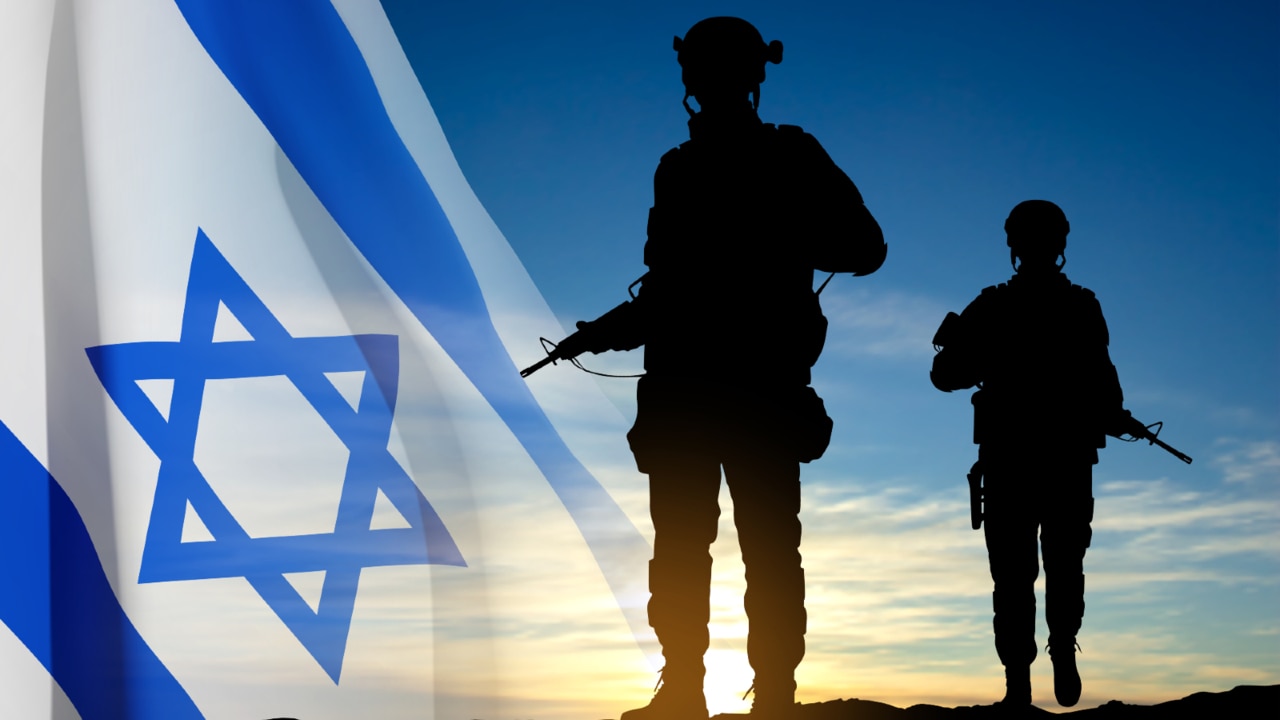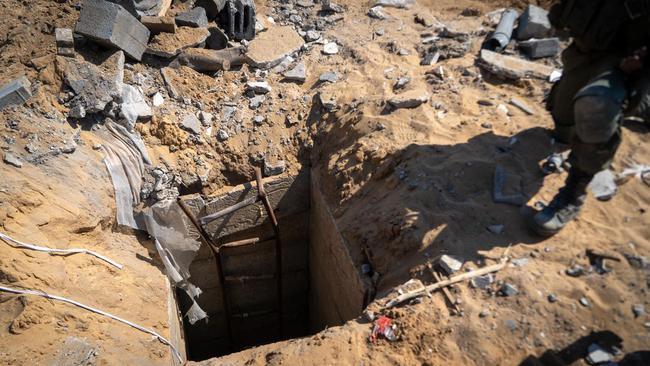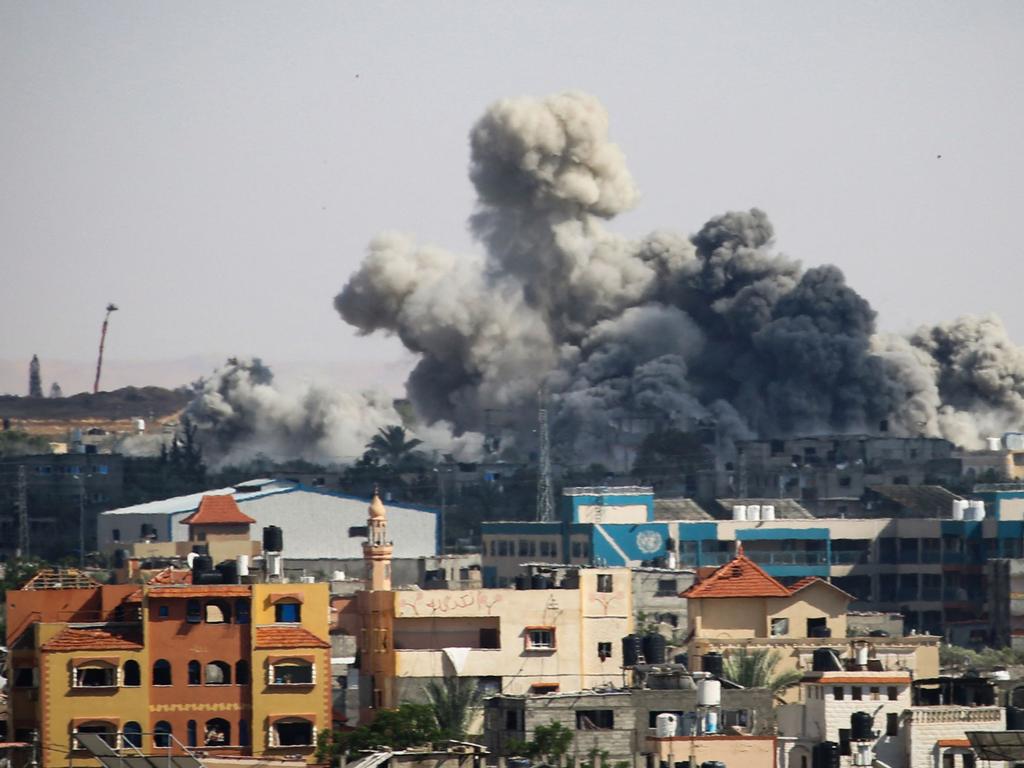What is Israel’s endgame? Army faces stark choices
Israel’s planned Rafah invasion poses complex problems. Can it ever achieve the aim of destroying Hamas? And at what cost?

On Gaza’s southern border with Egypt, the Star of David was unfurled on Israeli tanks yesterday morning, marking the apparent culmination of a ground invasion that began more than six months ago.
Beneath the palm trees, a Merkava IV tank lowered the barrel of its gun and rammed the two Palestinian flags that once welcomed visitors to the Rafah border crossing.
Hamas had announced the night before that it had accepted a ceasefire proposal negotiated via Egyptian and Qatari intermediaries, but Binyamin Netanyahu, Israel’s prime minister, egged on by extremist members of his coalition government and fearing for his political future, proceeded with plans to eliminate the four remaining Hamas battalions holed up in Rafah; an offensive that risks further alienating Israel’s allies.
The US and UK have warned Israel not to turn the tent city of 1.4 million Palestinian refugees into another battleground. So what are the options for the offensive? Can Israel ever achieve the aim of destroying Hamas? And at what cost?

FULL OCCUPATION
Israel has readied two divisions, comprising infantry, armour and special forces, for the invasion of Rafah.
One option, favoured by hardliners in Netanyahu’s coalition government, involves a full occupation of Rafah and destruction of all Hamas infrastructure regardless of civilian casualties.
To eradicate Hamas, hardliners believe, Israel must destroy the smuggling tunnels underneath the Philadelphi Corridor, the border between Egypt and Gaza. But an operation of this scale would probably cause mass civilian casualties and international condemnation. Such operations have typically been preceded by intense bombing campaigns intended to drive Hamas fighters underground.
Palestinians in eastern Rafah have been told to move to other parts of Gaza, including Khan Yunis, five miles away. Professor Michael Clarke, a defence analyst and the former director of the Royal United Services Institute, described the plan to move hundreds of thousands of displaced families into an area with no sanitation or running water as “half-baked”.
General Sir Richard Barrons, former British commander of Joint Forces Command, agreed. “Israel is not exactly providing a fleet of buses to move people north,” he said. “Families are being told to find their own way. That’s a long way to go with kids, grandparents, pots and pans.”
LIMITED RAIDS
The attack on Rafah on Monday night was a limited operation to seize the border crossing, albeit one that killed 20 Hamas fighters, the Israel Defence Forces (IDF) said, adding that they found three Hamas tunnels and a car laden with explosives. It said the Rafah crossing had been used to launch the mortar and rocket attacks that killed four Israeli soldiers last week.
Given the warnings of the dire humanitarian consequences of an all-out attack, Netanyahu may calculate that a series of limited raids might satisfy Israel’s hardliners while appeasing American demands for restraint.
“They could do quick encirclements and insertions with special forces, grabbing certain points and strengthening them as a series of little islands,” Clarke said. “It would still be very brutal. The Americans would probably live with that through gritted teeth. But it would take longer and the Israelis wouldn’t be sure when they had defeated Hamas.”
Given Netanyahu’s promise to entirely destroy Hamas, this could be a hard sell to his war cabinet. But it may be the most he can get away with without losing further US support.

FORCE A BETTER CEASEFIRE DEAL
Hamas and Israel are closer to agreeing a ceasefire than at any point since the week-long truce in November that freed 105 Israeli hostages.
In the hours before the Rafah assault, Palestinians joyfully took to the streets, mistakenly believing that Hamas’s agreement to the ceasefire could mean an end to the war. Netanyahu has rejected Hamas’s sudden change in position as a “ruse intended to make Israel look like the side refusing a deal”. He has argued that an attack on Rafah would improve Israel’s negotiating hand.
“It’s 99 per cent theatre,” said Mairav Zonszein, a senior analyst based in Israel at the International Crisis Group.
“Israel wants to be able to say that it has at least gone into Rafah. It’s the minimum that pretty much everyone in the war cabinet agrees needs to be done. But the far-right wants the total occupation and resettlement of Gaza.”
If Netanyahu does think he can get a ceasefire deal on more favourable terms simply by threatening Rafah, he may also be tempted to call the bluff of Itamar Ben-Gvir, the security minister, and Bezalel Smotrich, the finance minister, over their threats to collapse the government, given that they would no longer hold the balance of power after an election.

REGIONAL ESCALATION
The IDF has its own military aims for Rafah. Netanyahu has his political survival at stake. But neither can predict how images of starving Palestinian families under siege in Rafah could trigger events across the wider Middle East. “Israel has to remember that the enemy gets a vote too,” Barrons said.
It has been less than a month since Israel and Iran fired missiles at one another. Iran has specifically threatened Tel Aviv, Israel’s largest city, if Rafah comes under attack.
Egypt is terrified that violence could spill into the Sinai Peninsula.
On Israel’s northern border, Hezbollah may come under pressure to step up its attacks on Israel. On Monday King Abdullah of Jordan, one of the West’s strongest allies in the Middle East, pleaded with President Biden to head off an attack on Rafah because of concerns of a “regional spillover”.
“The war doesn’t have a clear strategy, it doesn’t have a clear endgame,” Zonszein said.
There is nowhere left for Israel’s invasion of Gaza to go after Rafah, the territory’s southernmost city, and it therefore seems the war has reached a point where either a ceasefire is agreed or the conflict continues indefinitely.
Every month the war drags on the risk of miscalculation increases. As the recent Iranian and Israeli attacks have shown, there is still a significant danger of an even more serious conflagration breaking out across the Middle East.

The Times







To join the conversation, please log in. Don't have an account? Register
Join the conversation, you are commenting as Logout